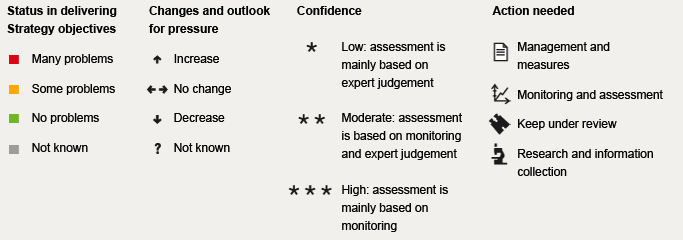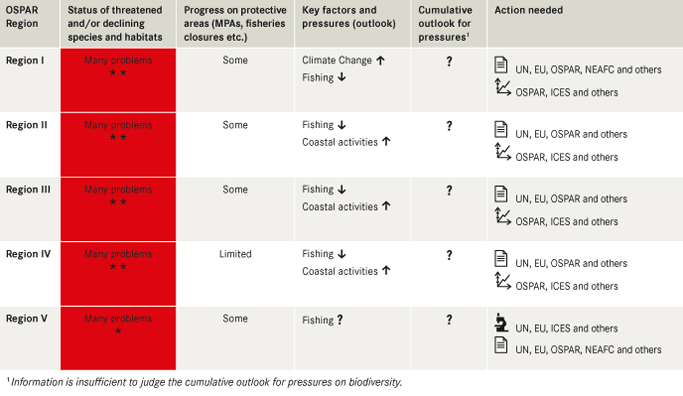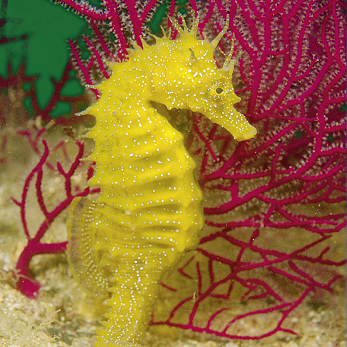
What happens next?
Reducing the rate of biodiversity loss
On the basis of current evidence, the UN target of reducing the loss of biodiversity by 2010 is far from being achieved in the North-East Atlantic. There is an urgent need for effective protection and conservation of the threatened and/or declining species and habitats on OSPAR’s List, which are primarily affected by pressure from fishing, general environmental status and the developing pressures from climate change. OSPAR must ensure that biodiversity protection is fully taken into account in related policies for the management of human activities, such as fisheries policies, in the EU Marine Strategy Framework Directive, and in marine spatial planning. This will require more intensive cooperation with other bodies as well as public outreach and awareness raising. These efforts must also be supported by targeted actions and measures to support the conservation of these features.
Effective monitoring of biodiversity
To support the ecosystem approach, OSPAR must extend its focus beyond protecting individual species and habitats or specific sites. Given the array of different actors managing the pressures that impact upon biodiversity and ecosystems, OSPAR should prioritise the development of an effective scheme for monitoring and assessing wider biodiversity status and ecosystem function. This must be linked with the concept of good environmental status under the EU Marine Strategy Framework Directive.
Moving forward with MPAs
The goal of an ecologically coherent network of well-managed MPAs by 2010 will not be met across the entire OSPAR area. Fuller use should be made of the potential of the MPA network to protect species, habitats and ecological processes beyond those covered by Natura 2000 sites, including those on the OSPAR List, and in areas not covered by Natura 2000, especially beyond the coasts and in areas beyond national jurisdiction.
Effective management of the MPA network needs to be ensured, both at the national and international level. This will further support the extent to which the network can move towards the goal of being ecologically coherent. This should be strengthened by integrating MPAs with marine spatial plans, seeking both to protect marine biodiversity and to ensure MPAs can contribute to the wider goals of sustainable management and use of the OSPAR area.
Delivering OSPAR Strategy objectives for biodiversity and ecosystems


